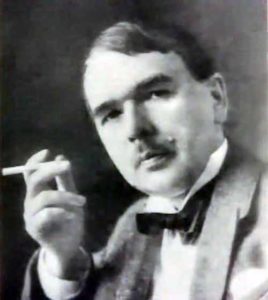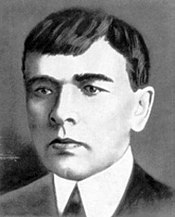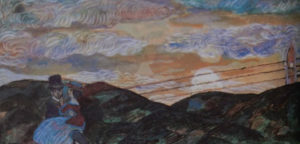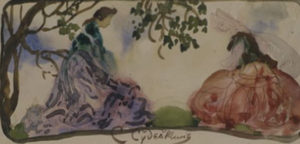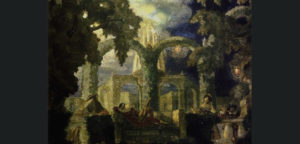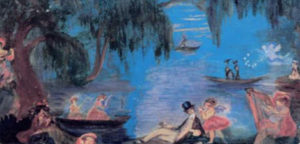Serge Sudeikin was born on March 19, 1882 in St. Petersburg.
1882 - 1946
Serge Sudeikin
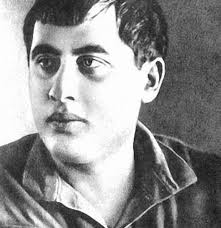
description
A Russian Symbolist painter and graphic artist, theater artist and decorator.
Sergey was born into the family of a lieutenant colonel who served in the Gendarmerie Separate Corps. In 1897–1909, he studied (with a break in 1902 due to temporary exclusion because of the presentation of his works of frivolous content at the student exhibition) at the Moscow School of Painting, Sculpture and Architecture; was a student of A. Arkhipov, A. Stepanov, A. Vasnetsov, N. Kasatkina, L. Pasternak.
He was one of the organizers of the Blue Rose group, as well as a founding member of the revived “World of Art”, a member and designer of the literary cabaret “Stray Dog”, a participant in the expositions “Wreath” and “Wreath-Stefanos”, movements that played a significant role in the history Russian art. S. Sudeikin published his graphic works in the magazines “Libra”, “Apollo”, “Golden Fleece”, “Satyricon” and “New Satyricon”.
Key ideas:
– Unlike his comrades, the members of “Blue-Rose”, S. Sudeikin adhered to some “ironic symbolism”. The artist turned his canvases into pictorial paintings on various themes of theatrical art, folklore, or “beautiful old times”, as can be seen in “Festivals”, “Ballet”, and in the series “Foam-like heroes”. In the plots of fairs, balagans, scenes from the nobility-estate life of the times of Pushkin or from the life of provincial cities, Sudeikin used a sharp grotesque, which made his easel painting improvisational and similar to sketches for theatrical scenery.
– When a part of a symbolist group that was heterogeneous in composition was immersed in science fiction and fairy tales, the creative aspirations of the other part, to which Sergei Sudeikin belonged, were animated by the search for the newest pictorial and plastic systems corresponding to the pulse of modernity.
– Actively cooperating with directors who advocated “pure theatricality” and stylization, Sudeikin refuses from vague softness, “soft” color gamut, which is inherent in the first period of his creativity. The master applies a “full-blooded” painting, exciting with the elements of emotional color.
– Sudeikin, designing operettas, farces, interludes, freely improvises, almost instantly turns an ordinary room into a fancy-motley hall, composes costumes and performs sets.
– In the portrait genre, Sergey Yuryevich was rather a modernist than a symbolist. He used a simple background, a minimum of detail and local color filling of large planes.
1882
1902
1903 - 1905
1907 - 1908
1909
1911 - 1912
1915
1917 - 1920
1920 - 1922
1924 - 1935
1946
The birth
The beginning of the artist's theater career
The beginning of the artist’s theater career: together with Sapunov, he worked on the design of a number of opera productions at the Moscow Hermitage Theater in the Karetny Row.
He continued his studies at the workshops of V. A. Serov and K. A. Korovin
He continued his studies at the workshops of V. A. Serov and K. A. Korovin, created illustrations together with M. Sterunov with N. Sapunov; participated in the exhibition “Scarlet Rose”, exhibitions of the Moscow Association of Artists, the Union of Russian Artists.
"Blue Rose"
He became one of the creators of the symbolic association “Blue Rose”, was a participant in the exhibitions “Wreath-Stefanos” (Moscow) and “Wreath” (St. Petersburg); married dancer and actress Olga Glebova.
Entered the St. Petersburg Academy of Arts
Entered the St. Petersburg Academy of Arts, the workshop of D. Kardovsky, met A. N. Benoit.
Entered the association "World of Art"
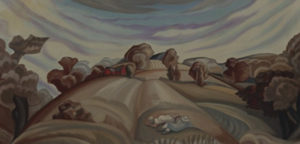
Made decorative panels for the cabaret theater “Halt of Comedians”
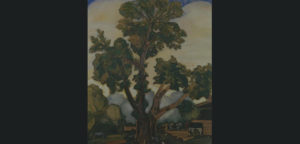
Went to the Crimea
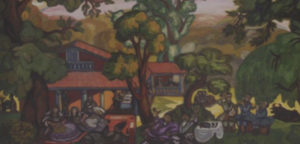
In Paris, he became a set designer at N. Baliyev’s cabaret “The Bat”
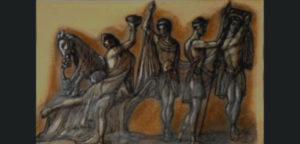
He worked actively

The death
He died on August 12, 1946 in Nyack, New York, USA.
Serge Sudeikin
On Artist
flow
Impressionism
Post-impressionism
friends
Konstantin Somov
artists
Alexander Benois
Abram Arkhipov
Alexey Stepanov
Apollinary Vasnetsov
Nikolay Kasatkin
Leonid Pasternak
Valentin Serov
Konstantin Korovin
Dmitry Kardovsky
By Artist
flow
Modern
friends
Konstantin Somov
Nikolai Millioti
artists
Pavel Kuznetsov
Nikolay Krymov
Nikolay Sapunov
Martiros Saryan

